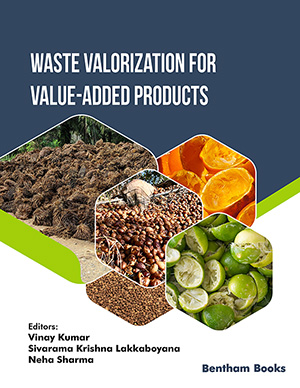
Abstract
Cellulose is one of the most abundant natural polymers developed in the ecosystem and has been used in many applications for industrial products since ancient times. Although the main sources of cellulose are wood plant, fibers and, additional sources can also be discovered, such as algae, fungi, bacteria, and even some marine organisms (such as tunicates). Mechanical or chemical processes are used to transform cellulosic materials into cellulose nanocrystals due to their efficacy, high aspect ratio, low density, renewability, and non-toxicity. They have drawn a lot of attention in a variety of industries. Here, we discuss various applications and properties in particular mechanical, rheological, liquid crystalline nature, and adhesives to introduce cellulose nanocrystals hydrophilic, colloidal stable, and rigid rod-shaped bio-based nanomaterial with high strength and high surface area. Under various circumstances, it improves the characteristics of various compounds. The grafting of polymers on the surface of cellulose nanocrystals has attracted significant interest in both academia and industry due to the rapidly expanding number of potential applications of surface-modified cellulose nanocrystals, which range from building blocks in nanocomposites and responsive nanomaterials to antimicrobial agents. Furthermore, we explore the most popular polymerization methods, such as surface-initiated ring-opening polymerization, surface-initiated free radical polymerization, surface-initiated atom transferred radical polymerization and surface-initiated controlled radical polymerization that are employed to graft polymers from the surface and reducing end groups of cellulose nanocrystals. In this review, we examine the available literature and provide a summary of recent applications of cellulose nanocrystals, including biomedical application, drug delivery, biosensor, tissue engineering, antibacterial activity, wound healings, etc.
Keywords: Cellulose nanocrystals, Grafting, Polymerization, Applications, Drug delivery system, Biomedical.
[http://dx.doi.org/10.1039/c2jm32956e]
[http://dx.doi.org/10.1021/bm100719d] [PMID: 20843063]
[http://dx.doi.org/10.3144/expresspolymlett.2018.66]
[http://dx.doi.org/10.1016/j.ijbiomac.2020.02.110] [PMID: 32061703]
[http://dx.doi.org/10.1007/s10570-016-0897-y]
[http://dx.doi.org/10.2147/NSA.S64386] [PMID: 26604715]
[http://dx.doi.org/10.1021/bm049291k] [PMID: 15762678]
[http://dx.doi.org/10.1007/s10570-010-9424-8]
[http://dx.doi.org/10.1007/s10570-010-9405-y]
[http://dx.doi.org/10.1007/s10924-020-01674-2]
[http://dx.doi.org/10.1007/s00397-021-01292-2]
[http://dx.doi.org/10.1016/S0141-8130(05)80008-X] [PMID: 1390450]
[http://dx.doi.org/10.1016/B978-0-08-100957-4.00009-7]
[http://dx.doi.org/10.22159/ajpcr.2017.v10i6.18072]
[http://dx.doi.org/10.3390/polym14153206] [PMID: 35956720]
[http://dx.doi.org/10.1021/cr900339w] [PMID: 20201500]
[http://dx.doi.org/10.1016/j.ijbiomac.2021.05.191] [PMID: 34081953]
[http://dx.doi.org/10.1021/acs.macromol.8b00733]
[http://dx.doi.org/10.1016/j.addr.2008.02.008] [PMID: 18403043]
[http://dx.doi.org/10.3390/polym5020361]
[http://dx.doi.org/10.1016/j.eurpolymj.2012.06.013]
[http://dx.doi.org/10.1021/bm060178z] [PMID: 16827585]
[http://dx.doi.org/10.1016/j.carbpol.2018.07.060] [PMID: 30143168]
[http://dx.doi.org/10.1016/j.progpolymsci.2011.06.002]
[http://dx.doi.org/10.1021/acsmacrolett.6b00295] [PMID: 35614657]
[http://dx.doi.org/10.1021/acs.biomac.7b00398] [PMID: 28482654]
[http://dx.doi.org/10.1016/j.jcis.2010.09.035] [PMID: 20932533]
[http://dx.doi.org/10.3183/npprj-2014-29-01-p058-068]
[http://dx.doi.org/10.4236/msa.2020.1111050]
[http://dx.doi.org/10.1039/b809212e]
[http://dx.doi.org/10.1007/s11859-014-0987-3]
[http://dx.doi.org/10.1021/bm8001717] [PMID: 18510360]
[http://dx.doi.org/10.1021/am505681e] [PMID: 25338530]
[http://dx.doi.org/10.3390/nano9020253] [PMID: 30781761]
[http://dx.doi.org/10.1007/s10570-013-9954-y]
[http://dx.doi.org/10.1007/s10924-021-02045-1]
[http://dx.doi.org/10.1016/j.eurpolymj.2014.07.025]
[http://dx.doi.org/10.1016/j.ejps.2011.01.005] [PMID: 21241802]
[http://dx.doi.org/10.1021/bm401593n] [PMID: 24716601]
[http://dx.doi.org/10.1039/c2ra01071b]
[http://dx.doi.org/10.1007/s10570-017-1474-8]
[http://dx.doi.org/10.1016/j.carbpol.2019.01.020] [PMID: 30732792]
[http://dx.doi.org/10.1208/s12249-011-9705-z] [PMID: 22005956]
[http://dx.doi.org/10.1155/2011/290602]
[http://dx.doi.org/10.1021/bm060620d] [PMID: 17206781]
[http://dx.doi.org/10.1016/j.ijbiomac.2016.10.085] [PMID: 27793679]
[http://dx.doi.org/10.1007/s10570-014-0470-5]
[http://dx.doi.org/10.1039/C6RA02038K]
[http://dx.doi.org/10.1016/j.carbpol.2017.11.091] [PMID: 29254027]
[http://dx.doi.org/10.1021/am4005072] [PMID: 23590943]
[http://dx.doi.org/10.3390/polym12122818] [PMID: 33261121]
[http://dx.doi.org/10.3390/nano9020164] [PMID: 30699947]
[http://dx.doi.org/10.1002/app.41719]
[http://dx.doi.org/10.1039/c2jm00134a]
[http://dx.doi.org/10.1177/0885328213486527] [PMID: 23640859]
[http://dx.doi.org/10.1088/1757-899X/334/1/012046]
[http://dx.doi.org/10.1002/pat.1504]
[http://dx.doi.org/10.1016/j.eurpolymj.2020.109697]
[http://dx.doi.org/10.1021/bm500524s] [PMID: 24914454]
[http://dx.doi.org/10.1021/acsami.6b00555] [PMID: 26925765]
[http://dx.doi.org/10.1039/D0RA09620B] [PMID: 35423276]
[http://dx.doi.org/10.1007/s10570-013-9901-y]
[http://dx.doi.org/10.1007/s11051-010-9995-1]
[http://dx.doi.org/10.1007/s10570-012-9804-3]
[http://dx.doi.org/10.15376/biores.8.2.1841-1851]
[http://dx.doi.org/10.1021/bm070304e] [PMID: 17542633]
[http://dx.doi.org/10.1039/D1MA00116G]
 11
11 1
1




























